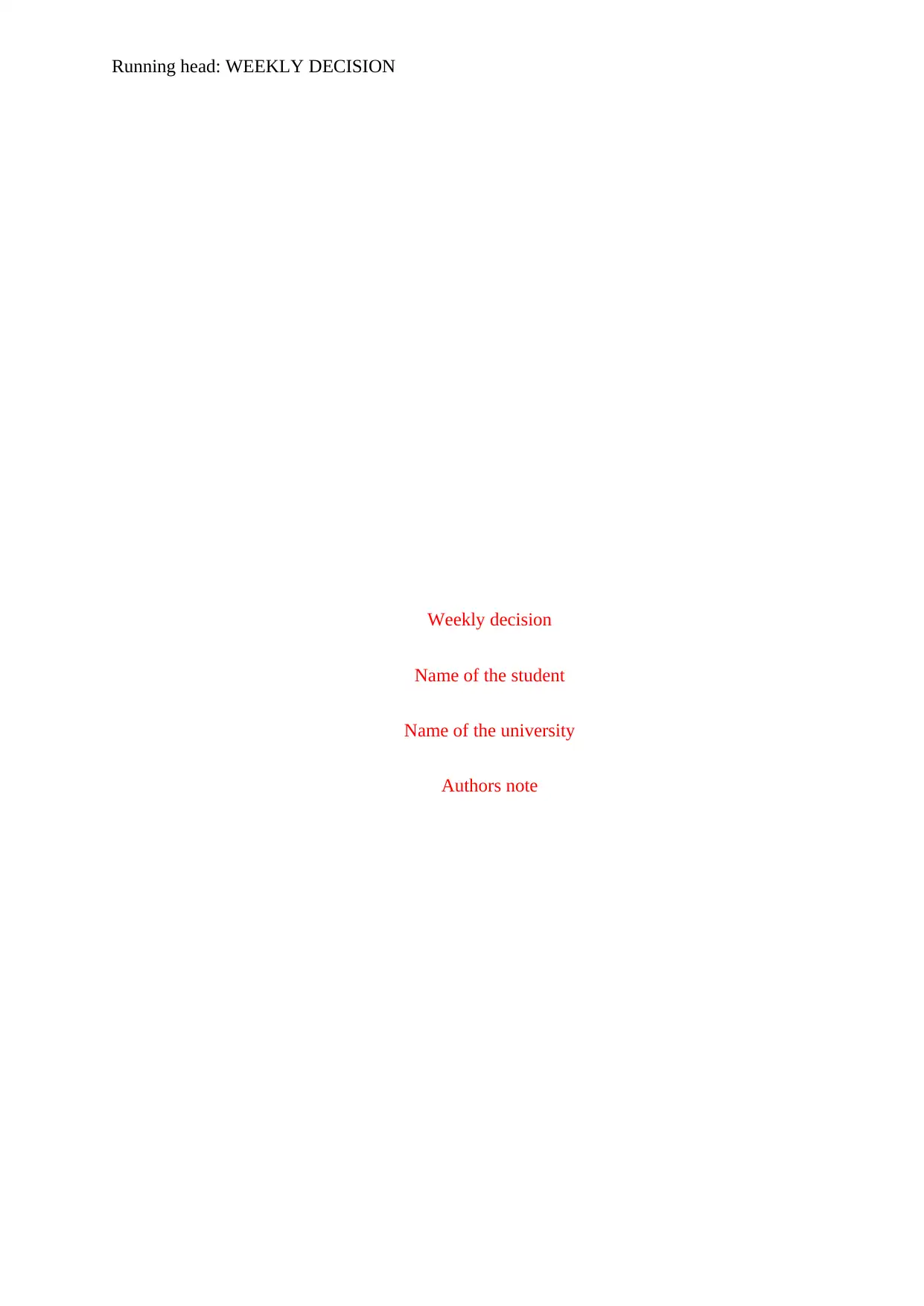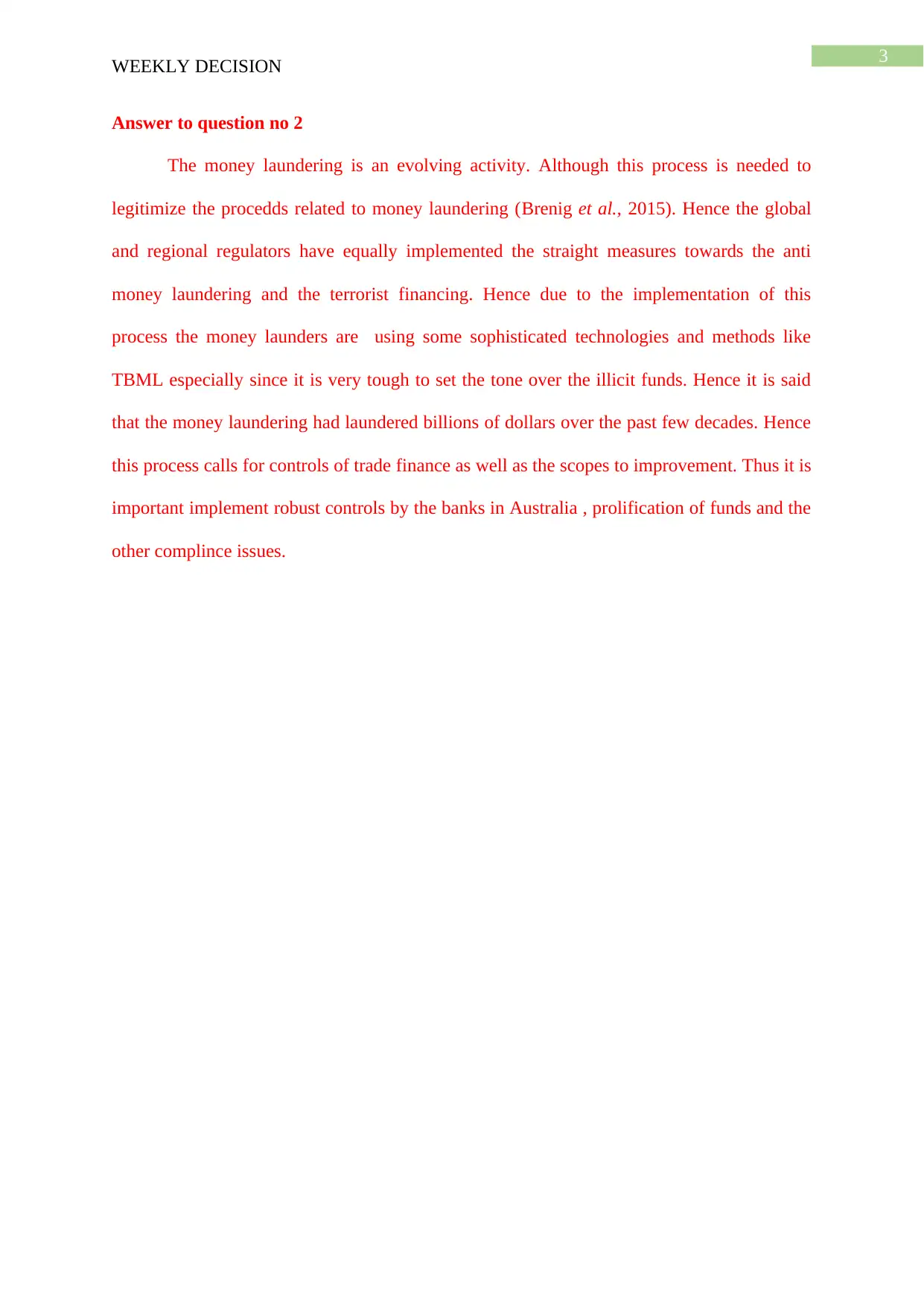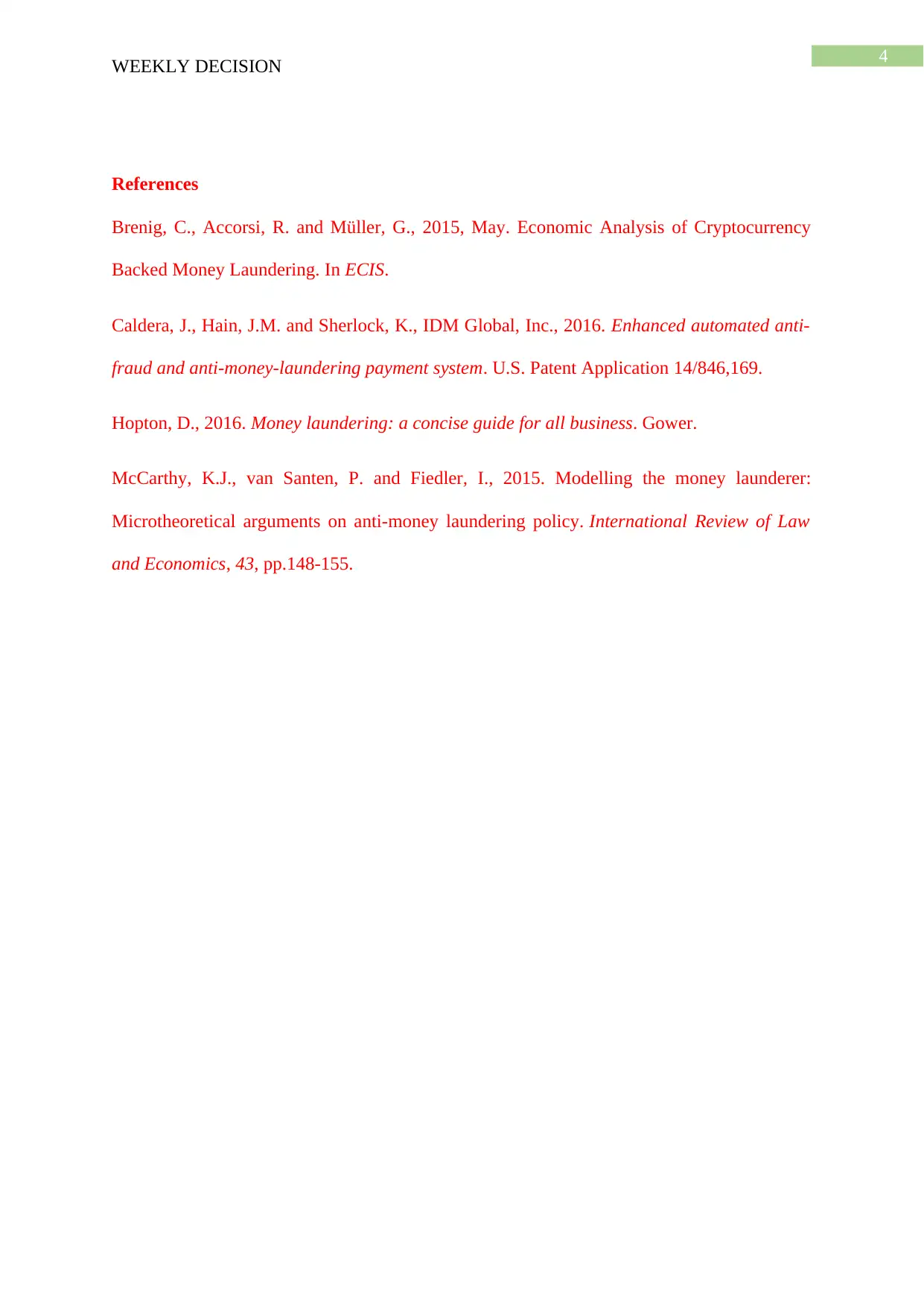Weekly Decision Report: TBML Risks and Australian Bank Controls
VerifiedAdded on 2023/01/05
|5
|660
|63
Report
AI Summary
This report addresses trade-based money laundering (TBML), focusing on risks and mitigation strategies for Australian banks. It examines how money launderers exploit global trade, particularly through over/under invoicing and phantom shipments, to obscure the origin of funds. The report suggests controls like scrutinizing shipment documents and invoice accuracy. Furthermore, it discusses the role of industry typologies, including those from AUSTRAC, in formulating risk assessment methodologies for AML/CTF officers, emphasizing the evolving nature of money laundering and the need for robust controls to combat sophisticated techniques. The report provides a detailed analysis of TBML methods and potential countermeasures.
1 out of 5








![[object Object]](/_next/static/media/star-bottom.7253800d.svg)